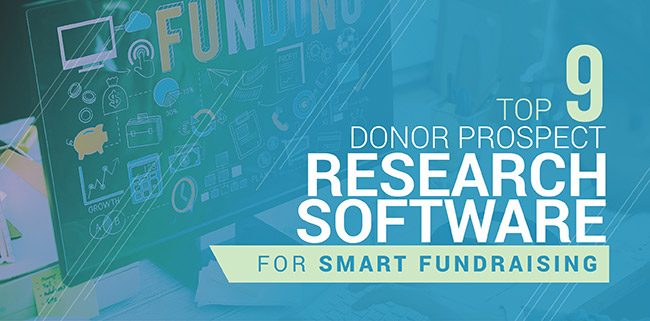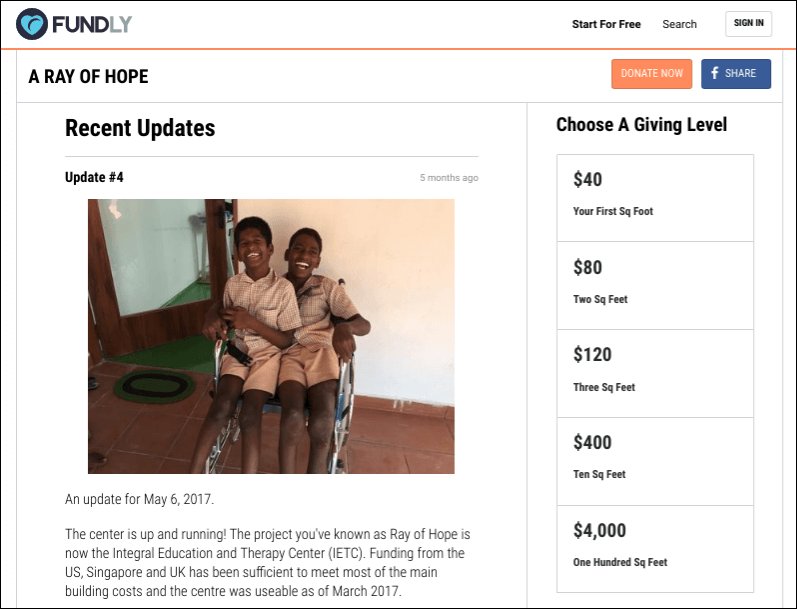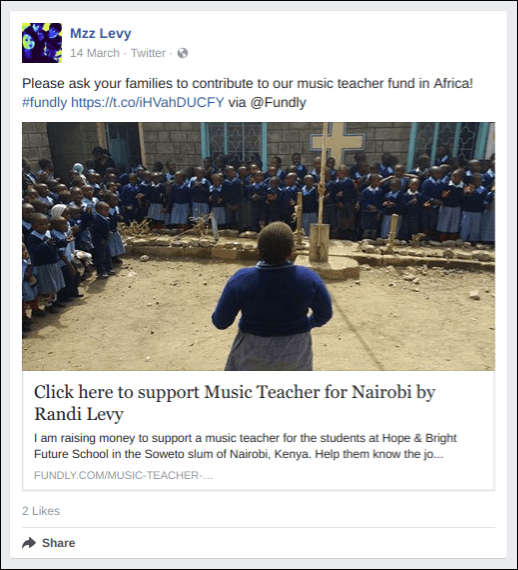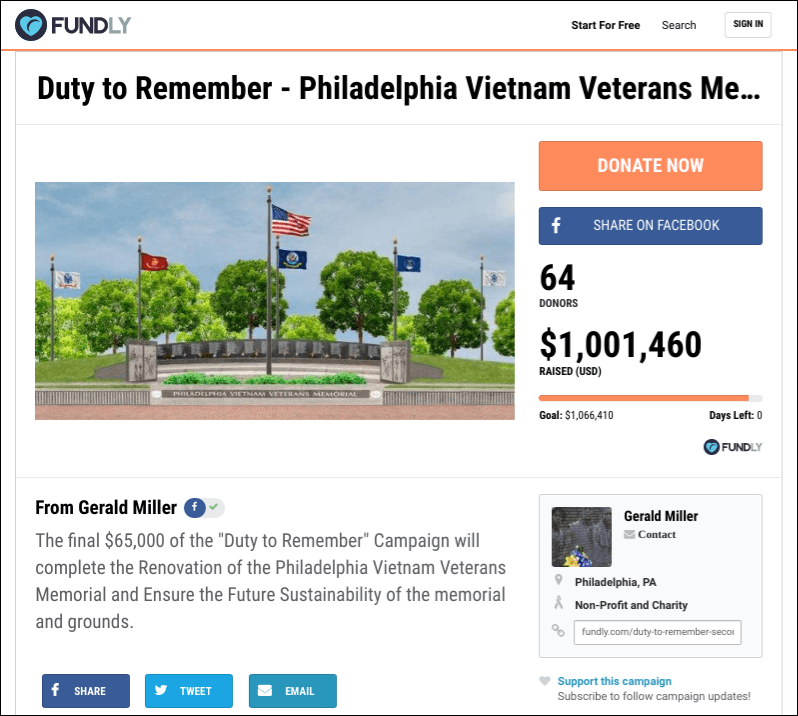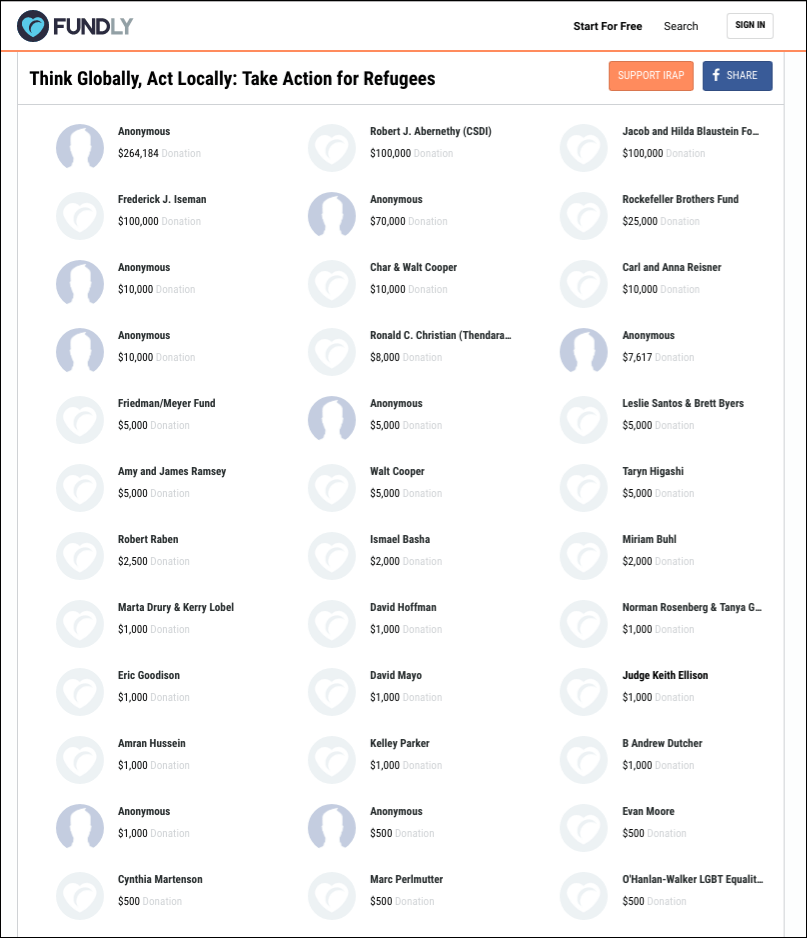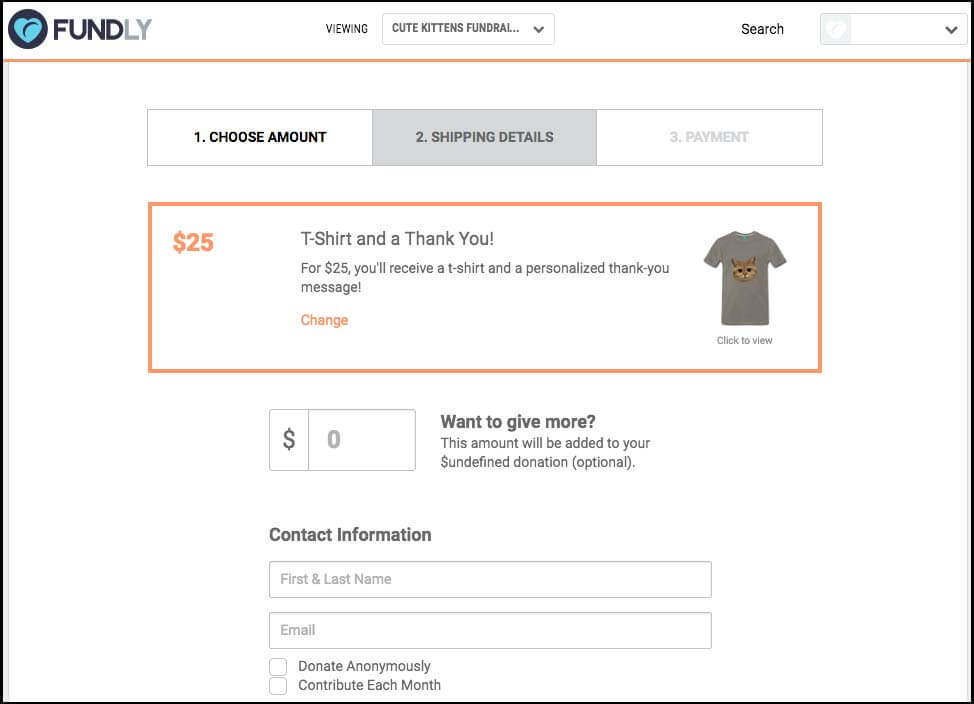12 Refreshing Summer Fundraising Ideas
by Kate WhiteBONUS: Get 99 refreshing summer fundraising ideas with our free PDF! Download our resource to print and share with your colleagues.
Let’s be honest, asking people for money is difficult. Really, really difficult.
What’s even worse? Asking grumpy people for money.
Donors are much more receptive to asks when they are in good moods. Whodathunkit?
So take advantage of the happiest season of the year — summer!
Summer is a great time to engage with donors. The sun is shining, the weather is good, and daylight lasts forever.
It is a season that beckons people outside, so heed the call. That’s why we’ve complied a list of our favorite summer fundraising ideas:
- Launch a crowdfunding campaign
- Host a block party
- Host a pool party
- Organize a water balloon fight
- Coordinate a car wash
- Host a fish fry or barbecue
- Run a walk-a-thon, bike-a-thon, or swim-a-thon
- Host a wine tasting
- Cater a dinner or host a gala outdoors
- Run a summer golf tournament
- Organize an outdoor concert
- Coordinate a summer film series
Use these suggestions to capitalize on the summer season and get your community outside and donating!
#1 LAUNCH A CROWDFUNDING CAMPAIGN
While crowdfunding is a popular fundraising idea for any time of the year, it’s especially effective over the summer because you can combine your online fundraiser with a live event such as a walkathon, charity concert, etc.
Additionally, creating a crowdfunding campaign is often free, making it an inexpensive fundraising tool to use during the summer (or any season for that matter).
When setting up your crowdfunding campaign, be sure to include a lot of fun visuals to help encourage your supporters to donate and share your campaign with their peers. Moreover, you’ll also need to draft a killer fundraising description that explains why you’re raising money and what communities or people will benefit from the funds.
After you launch your campaign, spread the word through social media, email, print and e-newsletters, and your local press.
#2 HOST A BLOCK PARTY
A block party is a one-stop shop for summer fun. The endless summer nights provide the perfect backdrop for a community gathering that benefits your cause!
Block Parties are what you make them so the vibe and atmosphere will be up to you.
Consider organizing some extra fundraising events to incorporate into the block party and maximize your donations.
I would suggest getting some competition brewing with a watermelon eating contest and a cook-off.
Watermelon is the perfect summer fruit, refreshing and healthy. Donors won’t feel guilty about stuffing their faces with watermelon.
Messy enough to provide a visual badge of honor for those who compete, your contest will be a highlight of the block party.
For those who find the competitive eating world unappealing give them the option of competitive cooking. A cook-off is a great complement to any block party.
Pick a summer classic, like apple pies, burgers, or chili, and get people cooking!
You can have party guests vote using a secret ballot or appoint a judging panel. Just have fun with it!
Look into getting a local chef or cooking supply shop to donate cooking lessons or a gift card to the winner.
Keep the party going late into the night and let your cause reap the financial rewards.
#3 HOST A POOL PARTY
Is a block party not cool enough for you in those hot summer months? Make it a pool party instead. Problem solved!
Pool parties are pretty straight forward. Have pool? Will party.
Just make sure you have your safety bases covered with licensed lifeguards.
Your pool party can be as extravagant as your heart desires. Set up carnival like games near the pool. Have a party-wide round of Marco Polo. Sell snacks from a concessions stand.
#4 ORGANIZE A WATER BALLOON FIGHT
Kids will join in for the fun of it and adults will join in for the nostalgia-fun of it. Establish a designated fight-zone, register competitors, and sell water balloons.
You could even make it a tournament with teams competing for a coveted prize…glory!
#5 COORDINATE A CAR WASH
Car washes are a fundraising standby for a reason. They’re a great way to raise money with little event cost.
They are also an excellent opportunity to expand awareness of your organization.
Make sure your car wash has plenty of signage stating what the proceeds are going towards. You might even want to print off some flyers or brochures to give those who participate additional info on your cause.
#6 HOST A FISH FRY OR BARBECUE
For this event you’ll have a crew of volunteers and staff manning the grill or fryers. Set up a method of ordering (online, via the phone, in person) and provide made-to-order food.
Your establishment can be take-out style or you can set up some outdoor seating.
Get kitschy if you go the eat-in route, and don’t forget the quintessential summer items like picnic tablecloths and funky plates.
#7 RUN A WALK-A-THON, BIKE-A-THON, OR SWIM-A-THON
Pick whichever of the three you think your community will be most interested and you’ll be off to the races.
Charge a small registration fee and have your participants gather sponsorships for distance walked, biked, or swam.
#8 HOST A WINE TASTING
Find an outdoor venue, get wine donated from local shops, and invite your supporters who are 21+ to pay a minor fee to participate.
People will jump at the chance to sample wine while feeling charitable.
#9 CATER A DINER OR HOST A GALA OUTDOORS
Take advantage of the beautiful weather and bring your higher-end events outside. For example, you could host a garden ball at your community’s botanical gardens.
#10 RUN A SUMMER GOLF TOURNAMENT
Golf tournaments can be very lucrative. To get started, you’ll need to partner with a local golf course and solicit your corporate sponsors and donors to buy spots in the tournament.
Your nonprofit can add a unique twist to your golf tournament by including additional games that guests can participate in. Check out this list of unique ideas to get inspiration for your fundraiser.
Once you’ve got your event planned out, advertise it by inviting current supporters and prospective donors. It’s also best to set up an online registration page where guests can RSVP, and you can communicate updates with guests directly on your dedicated events page.
#11 ORGANIZE AN OUTDOOR CONCERT
Outdoor concerts are summer staples. It doesn’t matter who the main attraction is, whether its Beyoncé or your cousin Al’s neighborhood band.
A benefit concert is all about having fun and raising money.
#12 COORDINATE A SUMMER FILM SERIES
Reserve a venue, like a park space, for 4 or 5 separate nights. Then pick out a movie for each reserved day that an entire family can enjoy.
Title your series, something like “June Movie Mondays,” and start rolling.
Make sure to advertise and let people know what the ticket sales are accomplishing. You could even sell theater concessions to create an authentic movie-going experience.
For more great information, check out our list of summer camp fundraising ideas!
Once you’ve executed a great summer fundraiser, make sure your organization is fully prepared to keep those hard earned donors.
Click here to learn more about donor retention.
And click here to learn more about donor segmentation.
Donors have more time and energy to get involved in their communities during their summers. Cement your nonprofit’s community presence by making a big fundraising push this summer. Go forth and conquer the season!

Mastering Donor Acquisition: 9 Easy Steps for Success
by Kate WhiteOrganizations value acquisition over retention at every giving level. Larger nonprofits tend to balance acquisition and retainment, but many smaller organizations don’t have the money or staff to do so.
Smaller nonprofits focus on retention, but they know that acquisition must be increased in order to raise more money.
The following best practices can help grow your donor population and keep your organization well-funded for years to come!
- Show potential donors how your nonprofit uses donations.
- Promote to donors online for better donor acquisition.
- Send direct mail for better donor acquisition.
- Take your fundraising online with crowdfunding campaigns.
- Provide exemplary stewardship to increase donor acquisition.
- Get creative at special events for increased donor acquisition.
- Focus on high-quality donors for the best donor acquisition rates.
- Use surveys and use them a lot.
- Give gifts in exchange for donations for better donor acquisition.
Let’s dive in!

1) Show potential donors how your nonprofit uses donations.
Showing donors specific evidence of how far their money will go can help to encourage donations from new sources.
Ray of Hope explains using their preset donations on their donation page what varying monetary donations do to help. This gives donors tangible evidence of how their money will be used, so they’re giving to something more concrete, as opposed to a nonprofit’s ambiguous overall budget.
Demonstrating the work your nonprofit does is a promotional act that can be performed through words, pictures, and other types of media:
- Share pictures of your work on social media.
- Send emails detailing what recent fundraising has allowed you to accomplish.
- Incorporate examples of your work on your website.
- Improve direct mail by showing donors exactly what their money goes towards.
‘Showing’ is about both citing specific evidence and showing that donations will go towards specific actions.
For example, showing a prospect that her money will go towards a specific event might lead to a donation. Being able to show that the money will go into a fund that’s specific to this discussed event assures the donor that her money truly is going to what you say it is going to, and not into an ambiguous or unspecified bank account.
Is there an opportunity to improve your organization’s fundraising? Take a look at our ultimate fundraising event checklist to find out!
In summary: Letting donors know how their funds will be used can lead to more donations because they’ll instantly know how their contributions will impact the people or communities you serve.
2) Promote to donors online for better donor acquisition.
The internet provides a bevy of options to both connect with and promote to donors. Not all online channels serve the same purpose, but they can all work together to acquire donors:
- Search engine marketing (SEM) — Advertising through Google and others search engines requires money, but it’s hard to raise money if you don’t spend some. You want your ads to attract people to your website in an effort to raise awareness for your nonprofit. Additionally, Google can offer up to $10,000 dollars in monthly Adwords spending to organizations that qualify for their Google Grants program.
- Social media — People who follow you on social media are generally more engaged with your nonprofit, and you have the chance to share meaningful content with them. This content, such as that shared by Ceres Community Project, should educate them about your organization, how to donate, and other relevant topics with the aim of acquiring email addresses.
- Email — Donor conversion through email averages about 33%. That’s a far cry from everyone you reach out to, but 1/3 is a desirable amount. The trick is to send the right messages at the right times, as you don’t want to overwhelm donors, give them extraneous information, or seem spammy and get blocked by internet service providers. If you do email right then you’ve got a great chance of acquiring more donors than you would through any other online medium.
In addition, adding a little variety to your organization’s outreach allows, you to interact with more potential donors.
In summary: Whether you use email, social media, search engine marketing, or a combination of all three, make sure to use these outlets not only to reach out to current donors but also to target new potential supporters.
3) Send direct mail for better donor acquisition.
The internet makes it easy to stay in touch with prospects, but some people crave a more intimate form of communication. Some fundraisers think that letters are out of date, but many older donors either don’t use or don’t respond to email.
Direct mail matters because older donors are often an organization’s biggest supporters.
An alternative to typical letters is to offer something for purchase that can be delivered through the mail, such as the cookbook offered by Ceres Community Project.
Not only is purchasing the cookbook a form of donating, but it must be mailed to the buyer, the cost of which is already covered by the purchase. This is a great opportunity to include more information about your organization in an attempt to turn a cooking enthusiast into a fully-acquired new donor.
Selling items, such as cookbooks, requires upfront costs, but it’s okay because you’ll be able to make it back in the future. Not only will many of your new donors give future gifts and recurring donations, but the amounts of those donations can increase over time.
In summary: Spending money to acquire new donors through direct mail is an investment in future donations that will more than cover the price of those initial mailings.
4) Take your fundraising online with crowdfunding campaigns.
Crowdfunding makes it easy to run specific fundraising campaigns.
Most software allows you to create a handsome webpage, share pictures, video, and other media to easily articulate your campaign, and process payments through a secure online service. Nonprofits can run multiple campaigns at once and manage them all on the go thanks to mobile compatibility.
The beauty of online fundraising is that it can help you to reach new donors. Many donations may come from loyal donors, but online campaigns make it easy for them to share your cause with friends and family through social media and email, so you stand a good chance of landing donations from new sources.
Online campaigns are also easy for nonprofits to promote to new prospects through their own social media profiles, email, and other online channels.
Learn about Fundly, a powerful online fundraising tool from NonProfitEasy.
In summary: Crowdfunding is an inexpensive way to widen your nonprofit’s reach and raise funds for your campaign. Best of all? There’s no limit to the number of crowdfunding campaigns you can launch.
5) Provide exemplary stewardship to increase donor acquisition.
People prefer to give online. It’s a safer, faster, and increasingly more credible way to raise funds.
Online fundraising also extends the opportunity to interact more with potential donors. You can share pictures, videos, links, and other informative content that can educate people and build the sort of goodwill that could lead to donations.
Stewardship extends beyond promotion. On top of marketing, the chance to interact with more donors means that you may receive more leads who want more information on your organization before donating. Your staff will likely interact with potential donors, and it’s important to treat prospects well from the start.
While your nonprofit might provide a great service to the world, people will judge your organization according to their interactions with your staff, so you want those experiences to be positive.
Ceres Community Project exerts great stewardship on their website.
They use language like, ‘our actions’, ‘together’, and ‘Join us!’ to convey a sense of inclusion in their community. They do a great job of conveying that their mission depends on a team effort that extends to both its donors and the community. The language is simple, but the impact can be large in how it could encourage new donations.
Another way to boost your nonprofit’s stewardship is by creating membership programs.
When donors sign up for your membership, they’re agreeing to make an annual or monthly contribution in return for discounts and other perks.
What’s great about membership programs is that donors get even more opportunities to interact with your organization, allowing you to cultivate long-lasting relationships.
When prospects form a positive affinity for your organization, you can begin a conversation about major gifts or planned giving.
Planned gifts are major gifts given in wills that can make a big difference for your organization. Receiving planned gifts is a long game, and the key to success is building great relationships that take foundation in a dedication to exemplary stewardship.
There are a lot of great resources available if organizations want to learn more about planned giving. It’s important to come prepared if your organization wants to start soliciting major or planned gifts.
In summary: If you want your donors to stick around, it’s important to make sure that your organization shows your appreciation so donors know you value more than just their money.
6) Get creative at special events for increased donor acquisition.
Similar to Sarah’s Race for literacy in Nepal, BATS Theatre is nonprofit dedicated to improving New Zealand performance work. Let’s say they host a show and pass around jars in which the audience is meant to place donations during the performance. The response is fine, but BATS receives only money and no names.
At the same show the next year, BATS disperses programs that contain envelopes and pencils. The audience is meant to write their names and contact information on the envelopes and place their donations inside. This time, the theatre not only raises money, but they acquire a host of new email addresses, too.
It’s one thing to acquire new donors and another thing to land new donors who you can ask for donations from again and again.
The concert fix is an example of a simple, creative solution that turns one-time donors into possible recurring donors.
Events of any kind are attractions that can bring new faces into contact with your nonprofit.
You can also implement fun activities such as raffles and games to help paint a positive image of your organization.
In summary: Events provide the perfect opportunity to rack in donations and the contact information of new donors.
7) Focus on high-quality donors for the best donor acquisition rates.
A one-time donor isn’t as valuable as a continual donor. Additionally, donors who give bigger gifts are more valuable than donors who give less.
Finding high-quality donors requires a focus on building relationships, as opposed to seeking donations. Money is what you want, but you’ll likely receive more money, and hopefully more than one donation, from people who feel a more intimate connection to your organization.
While major gift donors tend to be previous donors, and specifically mid-level donors, who, over time, decide to give more, you should try to predict which prospects might be apt to eventually become your major gift donors.
Pursuing prospects who won’t give as much or as frequently isn’t worth the time that could be spent talking to prospects who will give consistently, in large amounts, or both.
How do you know what to look for?
- Think about what characteristics your current loyal donors share.
- Find out if the prospect has a history of giving to other nonprofits.
- Look for wealth markers, such as real estate ownership, to gauge the prospect’s capacity to give.
- Ask questions that demonstrate if the prospect has an affinity for helping out causes like yours.
Your donation page can also do the work of encouraging people to become high-quality donors.
Mentor Me’s donation page has a few key features:
- A small button labeled ‘Monthly’, which gives donors the option to schedule automatic, recurring donations.
- A big blue button, which suggests that a nominal amount be added to the donation to counteract payment processing costs.
- Mentor Me requires that donors provide the full gamut of contact information, so that these new donors may be contacted to give future gifts.
The work of finding high-quality donors usually happens before someone lands on a donation page, but smart, subtle tweaks can help your donation page to encourage more people to give a little more or more frequently.
In summary: There’s not an exact science to knowing who will and won’t make a good donor, but looking for telling signs can help your nonprofit to dedicate its time to soliciting the right people, which should land you more high-quality prospects, more donations, and waste less of your fundraising resources.
Bonus! Learn how prospect research can help you find more major gift prospects.
8) Use surveys and use them a lot.
Many donors need to be provoked in order to speak up, and it’s an important responsibility for your nonprofit to seek what people think.
If you don’t know why people are giving, or why not, then you’re not learning how to improve fundraising appeals to new prospects.
Surveys need only ask the questions that your nonprofit wants answered, such as:
- What did you enjoy about the donation process?
- What could be improved or removed from the donation process?
- Why did you choose to give to our nonprofit?
- Why did you elect not to give to our nonprofit?
- How do you decide where to donate?
The questions on your surveys will be relative to your organization and timely needs. Request for people to participate in your survey after donating or send out the survey in a newsletter or its own email.
Try running a raffle or prize giveaway to encourage participation. Survey results become more statistically relevant with the more responses you receive.
Surveys don’t have to be forms, either physical or online. Mentor Me offers mentor roundtables to discuss the program, so they’re constantly learning what’s working, what’s not, and how the program might be improved.
Once you have your desired information, use the data to improve your fundraising appeals and who your fundraisers focus on.
In summary: Surveys should be used frequently, as your organization is always changing, people are changing, and the ways fundraising can be conducted are always being tweaked. Surveys supply the information to help your nonprofit stay ahead of the curve.
9) Give gifts in exchange for donations for better donor acquisition.
The people want tote bags, jackets, coupons, hats, pens, and anything that’s free. People love free stuff, and giving out nice gifts can help to encourage donations.
Many nonprofits give out gifts for a certain level of giving, such as a donor must give at least $50 to receive a free bag. Some nonprofits give out different gifts depending on the amount donated. What all gifts do is incentivize giving, as people are now not just helping a cause, but also receiving a nice gift in return for their philanthropy.
Raffles can be a type of gift giving to encourage donations, such as the wine cellar raffles held by Mentor Me. Not everyone wins, but the potential of winning encourages people to donate by purchasing tickets.
Not only does the winner feel good about being rewarded for a donation, but it’s fun for people to compete in a game of chance while knowing that, at the very least, their money is going towards a good cause.
Promote the gifts as part of your fundraising appeals, as some people might choose to donate to a cause that gives them something tangible in return for their money.
A gift might not only make the difference between no donation and a donation but the difference between a small and large gift, as people may jump to higher donation levels in order to receive a free gift.
In summary: Giving donors a gift with their donation can encourage new donors to support your mission and help you spread the word about your organization.
All nonprofits have a vast array of donor acquisition methods to choose from. Choose wisely, tailor the strategy to your organization, execute well, and never stop improving your tactics.
And don’t forget that great fundraising management can make your life so much easier!
Find out more information on donor acquisition with the following resources:
- Fundly’s Nonprofit CRMs: 11 Expert Tips. Looking for the right CRM for your organization? Check out our expert tips before you start shopping around!
- Double the Donation’s Top 10 Nonprofit CRM Vendors. Get the best of the best with Double the Donation’s list of top 10 CRM vendors for nonprofits like you!
- Salsa’s Donor Acquisition Best Tips. Still looking for help with donor acquisition? Check out Salsa’s best practices.
4 Things Nonprofits Needs to Know About Prospect Research
by Kate WhiteA pack of crayons can be so exciting to a child, as the plethora of colors opens up a world of possibilities. Likewise, your nonprofit’s donor constituency consists of a variety of different individuals who each have a different background and relationship with your organization.
Nonprofits should try to focus their fundraising efforts on those donors who have the capacity to make generous donations. It can be challenging to know where to get started, which is why many nonprofits invest in a fundraising technique called prospect research.
In this article, we’ll discuss the answers to four questions about prospect research:
- What Is Prospect Research?
- How Can Nonprofits Conduct Prospect Research?
- Why Should Your Organization Invest in Prospect Research?
- What Types of Organizations Use Prospect Research?
Let’s jump right into the first question!
#1: What Is Prospect Research?
Prospect research is the process of researching existing or potential donors who have the capacity to give to your organization. Fundraisers, development teams, and nonprofits all use prospect research to stay abreast of who to focus their efforts on.
Prospect research can unearth of variety of information including:
- Personal backgrounds
- Basic contact information
- Philanthropic motivations
- Past giving histories
Another key component of prospect research is wealth screening. While the two services often get confused, wealth screening is a type of prospect research that looks at a supporter’s giving capacity to determine if the individual would be willing to give more.
Some indicators of a prospect that’s willing and able to give more include:
- Past giving history to your organization and other nonprofits
- Political giving
- Real estate ownership
- Business affiliations
Combined with your other prospect research, you’ll gain better insight into your supporters as well as learn if these donors could become major or planned contributors. Best of all, conducting wealth screening is a strategy that every type of organization can use, and it fits any budget. Many of the tools used to find wealth indicators offer free resources for organizations!
Additionally, your CRM can track this information, so you can access more information in one place to make more individualized fundraising appeals to donors who have a higher affinity for your organization or capacity to give.
The bottom line: Prospect research is a strategy that any nonprofit can use to learn more about current donors and prospects. The information can be used to help organizations create a tailored cultivation or solicitation plan.
#2: How Can Nonprofits Conduct Prospect Research?
There are several ways to conduct prospect research, and your preferred method should depend on both the number of prospects you wish to research as well as your budget:
Prospect Research Company
These companies can take your list of donors, screen them against a variety of public and proprietary databases, and provide you with detailed philanthropic and wealth information. A prospect research company can screen prospects daily, weekly, or monthly, according to your schedule.
Additionally, if you were to partner with one of these companies, they will look at various aspects of prospect research, such as a donor’s:
- Past giving habits
- Philanthropic involvement
- Contributions to other nonprofits
With detailed insights on your donor, this information can help you discover potential major donors. It’s all the prospect information you need to find major gift prospects in less time so you can allocate more of your resources to other fundraising efforts.
Prospect Research Consultant
Working with a consultant is another option for your nonprofit. Much like a prospect research company, consultants can do extensive research on individual major gift prospects using public databases.
What sets a consultant apart from a prospect research company is that they can help you take the information they’ve obtained and develop effective solicitation and engagement strategies. Not only will you get key insights into your organization, but you’ll also receive expert advice to help you reach out to these potential major donors.
There are so many different types of consultants, and many professionals can perform more than just prospect research. That’s why it’s important to find a consultant that fits your organization.
Look for a consultant that has experience working with similar organizations and references that you can contact. Talking with consultants’ past clients will give you a feel for how they approach prospect research. If you’re happy with a consultant’s results, you should see if they offer other services and look into bringing them on to assist you with other aspects of your fundraising strategy.
Hiring the perfect consultant takes a lot of work. If you want some guidance on how to start your search, Averill has a comprehensive fundraising consultant guide that can help!
Do-It-Yourself
The last option your organization has is to complete prospect research in-house. This approach will save you the most money, but it’s best to conduct prospect research yourself when you have a prospect researcher on your staff. This person, or team of researchers, will know how to efficiently gather and organize information from a plethora of databases.
If your nonprofit can’t afford a prospect researcher, then there’s always a more makeshift approach to prospect research that a current staff member or team of staff could learn to conduct. This process involves online research using sites like Foundation Center, Guidestar, and Bloomberg to learn about your donor’s philanthropic involvement.
As you consider the best approach for your nonprofit, be aware that there are advantages and disadvantages to each option. Weigh the pros and cons to determine the way that will best fit your needs and budget.
The bottom line: While there are several ways organizations can conduct prospect research, the best approach is to use an expert—whether it’s a consultant or an in-house researcher.
#3: Why Should Your Organization Invest in Prospect Research?
Identify major gift prospects
You choose the company you keep, and, as a nonprofit in need of funds, you want that company to include as many major gift prospects as possible. Major gift prospects have the capacities to give transformational gifts that allow you to surpass fundraising goals and better fulfill your mission.
Indicators of high quality major gift prospects include:
- Past charitable giving to your organization
- Past charitable giving to other nonprofits
- Nonprofit involvement as a foundation trustee or director
- Political giving
- Real estate ownership
Prospect research will uncover this data, so you can find new major gift prospects fast. When you store the information in your CRM, you have a wealth of prospect data from which to craft individualized ask strategies to the prospects who are most worth your time.
Moreover, new major gift prospects don’t always come from new donors. In fact, most major gift donors begin as annual donors, which is why it is important to screen your loyal, even if minimal, financial supporters.
Learn more about your volunteers
Volunteers are the people who give their time and energy to bring your mission to the masses. Without them, your nonprofit would struggle to find the manpower to make an impactful difference.
A benefit of volunteers is that many of them are eligible to apply for volunteer grants. Prospect research reveals employer information, which you can use to discover which of your volunteers work for companies that offer these types of grants. Of course, store this information in your CRM in order to capitalize on this form of corporate giving each time that an eligible constituent volunteers.
Make the most out of your organization’s events
Party planners hate when they don’t know how many people are coming. How much pizza should they order? Is a larger room necessary? Does the clown have enough balloons?
Take your events seriously and plan ahead. You want to know who is coming to your events so that prospect research can swoop in for the big assist. Prospect research allows you to screen your attendees, so you know who to provide special perks to and direct your major gift officers to converse with, at an event. In a case study put together by IMPACTism, a nonprofit advocacy group, the worst use of nonprofit time was when staff could spent their time at fundraising events talking to all the wrong people, when plenty of major gift donors are standing out in the open.
The bottom line: Investing in prospect research is worth the time and money because you’re able to get deeper insights into your donors and volunteers. Plus, you’ll be able to find major donors faster with these strategies.
#4: What Types of Nonprofits Use Prospect Research?
The truth is that every nonprofit can benefit from using prospect research, but the process and its results may be different for every type of organization.
That’s why we’ve created a list of the organizations and the types of supporters that they can conduct prospect research on:
- Schools: K-12 schools and universities can conduct prospect research on parents, alumni, students, and faculty. This research can help schools determine which supporters have the potential to become major donors. In addition, the information can be used to plan your next fundraising event.
- Healthcare Organizations: Hospitals can use prospect research to gain a more complete picture of their patients. In fact, many prospect research services allow hospitals to send in newly admitted patients to complete daily screenings. Healthcare organizations can use the information to determine how much to ask donors.
- Greek Organizations: Fraternities and sororities can use prospect research to learn valuable information about alumni. Bulk screenings are the perfect service of many Greek organizations.
- Faith-Based Organizations: Churches, mosques, synagogues, and other places of worship can conduct research on new attendees at services as well as long-term congregants to determine who can contribute major gifts. Faith-based organizations can also use prospect research to plan and devise other fundraising initiatives.
- Arts and Cultural Nonprofits: Organizations that focus on the arts can screen ticket purchasers, event attendees, membership holders, and consistent supporters to learn which donors have the potential to give more.
As you can see, there are plenty of organizations that can benefit from prospect research. Even if we didn’t list your type of organization, gaining deeper insights into your supports can offer a ton of valuable advantages.
Just be sure to evaluate your organization and the kind of information you want to gain from your supporters to determine if prospect research is right for your nonprofit.
The bottom line: Prospect research is a strategy that can be used by virtually every type of organization. The trick is figuring out what information is going to be the most applicable for your organization’s needs.
With prospect research, you can improve the capabilities of your CRM and lead better directed and more individualized fundraising campaigns.
Want more fundraising advice? Check out these additional resources:
- Ultimate Guide to CRMs. Once you’ve performed your prospect research, you’ll need a place to store all the data you’ve gained on your donors. Nonprofit CRMs are the perfect place to store your information and track the progress of your fundraising initiatives.
- Full List of Fundraising Ideas. With more information on your prospects, you can boost your fundraising efforts and tailor your initiatives to best suit your prospective donors. Get our complete list of fundraising ideas—perfect for any cause.
- Donation Request Letters. Learn how to write the perfect donation letter to ask for gifts using the information you gained via prospect research.
Crowdfunding Resources
Fundraising Resources:
Popular Resources

Fundly is dedicated to providing you with the tools you need to raise money for whatever your cause may be.

